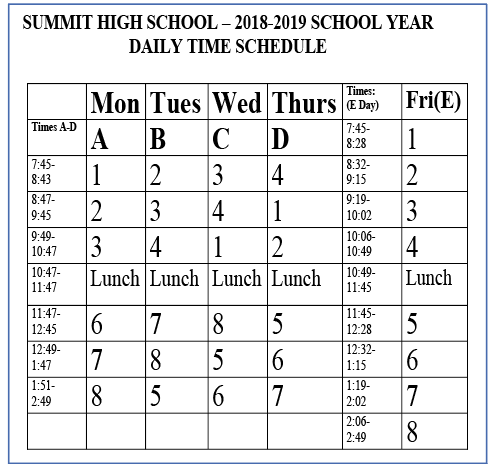The key to un-blocking our potential
The benefits of block scheduling and why WHS should adopt a more progressive approach

Photo summit.k12.nj.us
After four years at WHS, we realized that the regimentation of everyday life can get monotonous. One reason why we feel this way may be because of our traditional, nine-period schedule. In order to balance the rigorous course load, it is time for WHS to stray from traditional scheduling and adopt the more modern system of block scheduling. Although schools may be hesitant to incorporate a block schedule, we need to recognize the numerous benefits a block schedule offers so that students can truly excel.
Unlike neighboring school districts such as Cranford and Summit, Westfield does not have a block schedule. Usually a block schedule consists of classes that meet three to four times a week and last for longer periods of time. A type of block scheduling format is the alternate day, or A/B schedule, where students go to a certain classes for roughly an hour.
For example, Summit High School uses A/B/C/D/E, representing each day of the week. Their classes begin at 7:45 and end at 2:49, with an hour lunch and 52-minute classes, except for Fridays when they have a regular schedule. The later start time and the longer lunch period that have been allotted allow students to recuperate from their rigorous classes and the stresses that come with high school.
Alternate scheduling not only helps with the academic and mental well being of students, but their overall approach to learning. The American Association of School Administrators noted that students’ grade point averages increased as a result of block scheduling. By only having a few classes per day, students can devote more of their time and attention to those specific classes, which reduces the stress of the students and give them more of an opportunity to succeed.
The academic monotony of a traditional schedule presents its stressors, as students must juggle multiple assignments and tests throughout the week. Students can go from reading Beowulf in English to taking a chemistry test on polarization only a few minutes later.
Students are not the only ones affected, as teachers must condense their plans to conform to the 43-minute period. High schoolers might be having a deep discussion in English that suddenly gets cut off by the bell. The following day, teachers and students must compensate for the lost time, trying to resume the quality of the discussion from the previous day.
Considering that the mission of teachers is to help students reach their fullest potential, the traditional schedule WHS has limits students by not giving them enough time to reach a deep understanding of the material. The rushed switch between subjects doesn’t prepare students for college where the duration of classes is longer and classes only meet a few times a week.
In conjunction with the college level of certain courses at WHS, it would be helpful to mimic a college environment as well through a block schedule. To combat the monotony of the traditional schedule, WHS should incorporate a block schedule that provides variety and dedicates more time for students and teacher to delve into materials.
